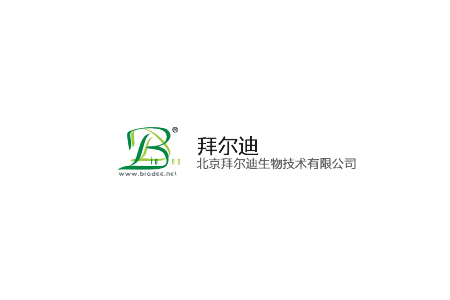

貨號
產品規格
售價
備注
BN41758R-50ul
50ul
¥1486.00
交叉反應:Human,Mouse,Rat(predicted:Cow,Horse,Rabbit) 推薦應用:WB,IHC-P,IHC-F,IF,Flow-Cyt,ELISA
BN41758R-100ul
100ul
¥2360.00
交叉反應:Human,Mouse,Rat(predicted:Cow,Horse,Rabbit) 推薦應用:WB,IHC-P,IHC-F,IF,Flow-Cyt,ELISA
BN41758R-200ul
200ul
¥3490.00
交叉反應:Human,Mouse,Rat(predicted:Cow,Horse,Rabbit) 推薦應用:WB,IHC-P,IHC-F,IF,Flow-Cyt,ELISA
產品描述
| 英文名稱 | PD-1 |
| 中文名稱 | 程序性死亡1抗體 |
| 別 名 | CD279; CD279 antigen; hPD 1; hPD l; hPD-1; hSLE1; PD 1; PD1; PDCD 1; PDCD1; PDCD1_HUMAN; Programmed cell death 1; Programmed cell death protein 1; Protein PD 1; Protein PD-1; SLEB2; Systemic lupus erythematosus susceptibility 2. |
| 研究領域 | 腫瘤 細胞生物 免疫學 細胞凋亡 |
| 抗體來源 | Rabbit |
| 克隆類型 | Polyclonal |
| 交叉反應 | Human, Mouse, Rat, (predicted: Cow, Horse, Rabbit, ) |
| 產品應用 | WB=1:500-2000 ELISA=1:5000-10000 IHC-P=1:100-500 IHC-F=1:100-500 Flow-Cyt=1μg /test IF=1:100-500 (石蠟切片需做抗原修復) not yet tested in other applications. optimal dilutions/concentrations should be determined by the end user. |
| 分 子 量 | 32kDa |
| 細胞定位 | 細胞膜 |
| 性 狀 | Liquid |
| 濃 度 | 1mg/ml |
| 免 疫 原 | KLH conjugated synthetic peptide derived from human PD-1:201-288/288 |
| 亞 型 | IgG |
| 純化方法 | affinity purified by Protein A |
| 儲 存 液 | 0.01M TBS(pH7.4) with 1% BSA, 0.03% Proclin300 and 50% Glycerol. |
| 保存條件 | Shipped at 4℃. Store at -20 °C for one year. Avoid repeated freeze/thaw cycles. |
| PubMed | PubMed |
| 產品介紹 | This gene encodes a cell surface membrane protein of the immunoglobulin superfamily. This protein is expressed in pro-B-cells and is thought to play a role in their differentiation. In mice, expression of this gene is induced in the thymus when anti-CD3 antibodies are injected and large numbers of thymocytes undergo apoptosis. Mice deficient for this gene bred on a BALB/c background developed dilated cardiomyopathy and died from congestive heart failure. These studies suggest that this gene product may also be important in T cell function and contribute to the prevention of autoimmune diseases. CD279 is an immunoglobulin superfamily member, also known as Programmed Cell Death 1. Programmed Cell Death 1 is expressed on a subset of CD4-CD8 thymocytes, and on activated T and B cells. Programmed Cell Death 1 is thought to be involved in lymphocyte clonal selection and peripheral tolerance. The Programmed Cell Death 1 ligands, PDL1 (also known as B7H1) and PDL2 (B7DC), are members of the B7 immunoglobulin superfamily. Function: Inhibitory cell surface receptor involved in the regulation of T-cell function during immunity and tolerance. Upon ligand binding, inhibits T-cell effector functions in an antigen-specific manner. Possible cell death inducer, in association with other factors. Subunit: Monomer. Subcellular Location: Membrane; Single-pass type I membrane protein. Tissue Specificity: Ta,Ba,Ma,Thy DISEASE: Systemic lupus erythematosus 2 (SLEB2) [MIM:605218]: A chronic, relapsing, inflammatory, and often febrile multisystemic disorder of connective tissue, characterized principally by involvement of the skin, joints, kidneys and serosal membranes. It is of unknown etiology, but is thought to represent a failure of the regulatory mechanisms of the autoimmune system. The disease is marked by a wide range of system dysfunctions, an elevated erythrocyte sedimentation rate, and the formation of LE cells in the blood or bone marrow. {ECO:0000269|PubMed:12402038}. Note=Disease susceptibility is associated with variations affecting the gene represented in this entry. Similarity: Contains 1 Ig-like V-type (immunoglobulin-like) domain. SWISS: Q15116 Gene ID: 5133 Database links: Entrez Gene: 5133 Human Entrez Gene: 18566 Mouse Omim: 600244 Human SwissProt: Q15116 Human SwissProt: Q02242 Mouse Unigene: 158297 Human Unigene: 5024 Mouse Unigene: 105023 Rat Important Note: This product as supplied is intended for research use only, not for use in human, therapeutic or diagnostic applications. 配體為B7H1/PDL1(CD274)和B7DC/PDL2,抑制活化T細胞的增殖和細胞因子的產生,抑制B細胞功能,參與免疫耐受 |